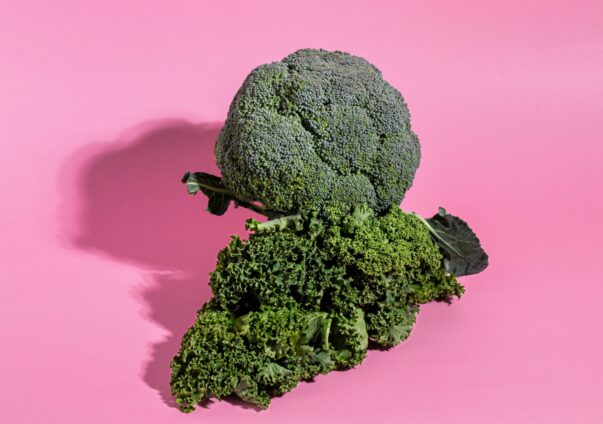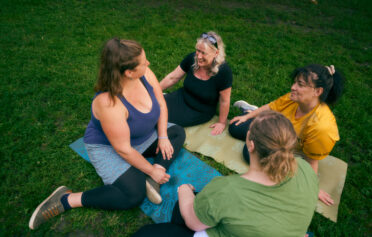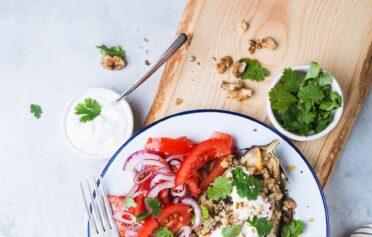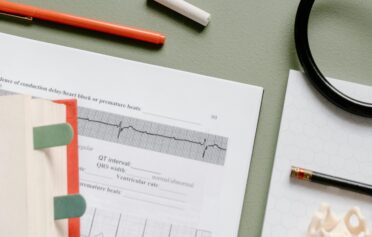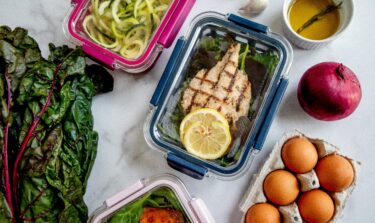
The best foods to lower your blood pressure (and the worst)
High blood pressure (hypertension) means your heart is working harder than normal to move blood around your body. Over time, this can increase your risk of serious health problems like heart disease and stroke.
The good news? The food you eat can help and here you can discover our dietitian-approved best foods to lower blood pressure – and the foods to limit.
If you’re living with high blood pressure and have a BMI over 35, you may be eligible for Oviva – an NHS-provider offering tailored weight loss support from healthcare experts.
Key Takeaways
- Eat plenty of fruits and vegetables to support healthy blood pressure.
- Choose lean proteins and foods rich in potassium, magnesium and fibre.
- Limit salt, sugar, alcohol and processed foods, as these can raise blood pressure.
- Small changes to your diet, movement and stress management can all help you regulate blood pressure and lower health risks.
How diet affects blood pressure
There’s no single food that can instantly lower your blood pressure – but your eating habits can have a powerful impact, both positively and negatively.
- Potassium, found in fruits and vegetables, can help lower blood pressure.
- Too much sodium (salt) can raise blood pressure. Try to limit salty foods like ready meals, snacks and takeaways, as well as the salt you add to meals.
- Sugar and saturated fat can also raise blood pressure. Ultra-processed foods and high-fat meals are best kept to a minimum.
- Salty, sugary and fatty foods can also lead to weight gain – and carrying extra weight is a known risk factor for high blood pressure. Losing weight, even a small amount, may help regulate your readings.
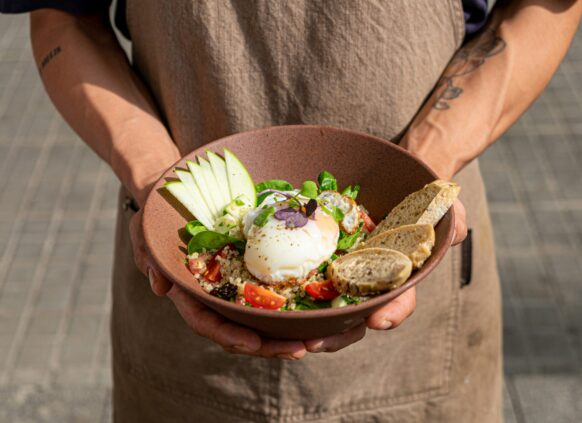
Best foods for lowering blood pressure
High blood pressure puts extra strain on your heart and blood vessels – but the right foods can help lower your blood pressure over time.
Eating a balanced diet rich in certain foods can help by:
- Relaxing blood vessels
- Increasing blood vessel flexibility
- Lowering sodium levels
- Reducing inflammation
1. Potassium-rich foods
Potassium helps your kidneys remove sodium – this is important for lowering blood pressure as too much sodium can cause blood pressure to rise.
Potassium can also relax the walls of your blood vessels, which is important because hypertension increases stress on these vessels.
Good sources include:
- Bananas
- Sweet potatoes
- Beans
- Oranges
- Tomatoes
- Spinach
- Coconut water
- Greek yoghurt
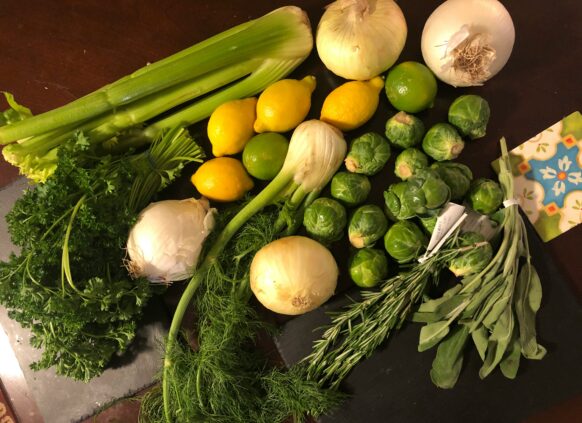
2. Fruits and vegetables
Fruits and vegetables are some of the best foods for lowering blood pressure.
They’re often rich in potassium, helping to lower sodium levels in the body.
They’re also rich in antioxidants. Oxidative stress can raise blood pressure by reducing blood vessel flexibility, and disrupting nitric oxide levels needed for healthy circulation, but antioxidant-rich fruits and veggies can help minimise this oxidative stress.
And nitrate-rich veggies can relax blood vessels.
Great choices include:
- Bananas
- Oranges
- Tomatoes
- Celery
- Beetroot
- Spinach
- Berries
- Carrots
- Sweet potatoes
- Cabbage
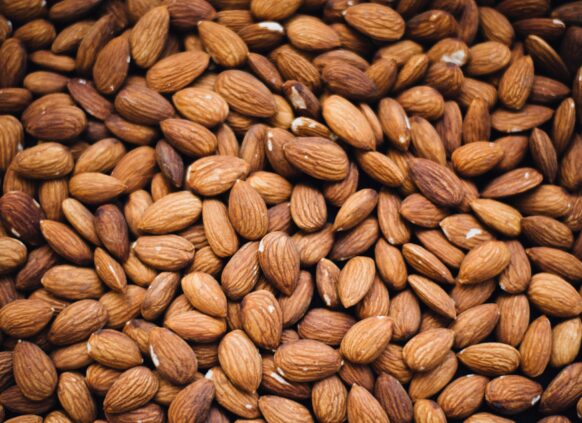
3. Magnesium-rich foods
Magnesium can help improve circulation and relax blood vessels – two important factors for lowering or maintaining healthy blood pressure.
Top magnesium-rich foods include:
- Dark leafy greens (e.g., kale and spinach)
- Almonds
- Cashews
- Whole grains
- Dark chocolate
- Pumpkin seeds
4. Fibre-rich whole grains
Whole grains that are high in fibre have been shown to reduce the risk of heart and circulatory diseases. They also slow down how quickly your body converts carbohydrates into energy, which helps keep blood glucose levels more stable – an important factor in lowering the risk of high blood pressure.
Great sources of fibre-rich whole grains include:
- Brown rice
- Whole wheat bread
- Oats
- Quinoa
- Whole wheat pasta

5. Healthy fats
Healthy fats – like polyunsaturated (omega-3 and omega-6) and monounsaturated fats – support your heart and arteries and may help lower blood pressure.
They can also improve your cholesterol balance by raising HDL and lowering LDL. This matters because high LDL, combined with high blood pressure, can increase your risk of heart disease and stroke.
Try adding more of these into your diet:
- Avocados
- Almonds
- Peanuts
- Olive oil
- Rapeseed oil
- Salmon
- Mackerel
6. Lean protein
Lean proteins can help you manage your weight – which can, in turn, help reduce blood pressure. They’re lower in calories than high-fat meats but still help you feel full and satisfied.
Steer away from red and ultra-processed meats towards healthier lean proteins like:
- Chicken
- Eggs
- Fish
- Beans
- Tofu
- Lentils
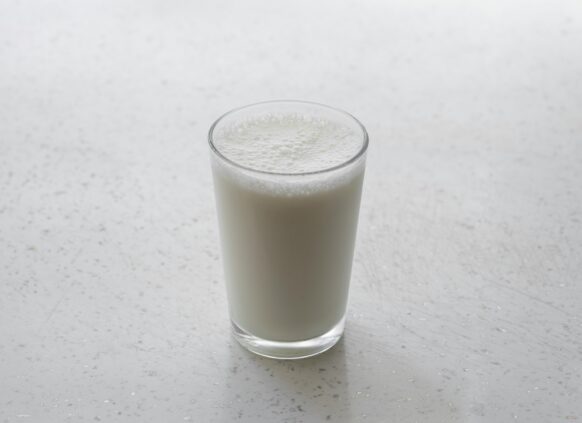
7. Low-fat dairy
Research suggests that dairy products may have a modest effect on lowering blood pressure.
This may be thanks to nutrients like calcium, magnesium and potassium – and potentially beneficial dairy peptides, too.
Go for lower-fat versions, such as:
- Low-fat yoghurt
- Cottage cheese
- Skimmed milk
8. Fermented foods and probiotics
The research is still growing, but fermented foods and probiotics might support healthy blood pressure by influencing your gut microbiota – the mix of microbes in your digestive system that can impact inflammation and overall health.
Examples of fermented foods and probiotics include:
- Yoghurt with live cultures
- Kefir
- Kimchi
- Sauerkraut
- Miso
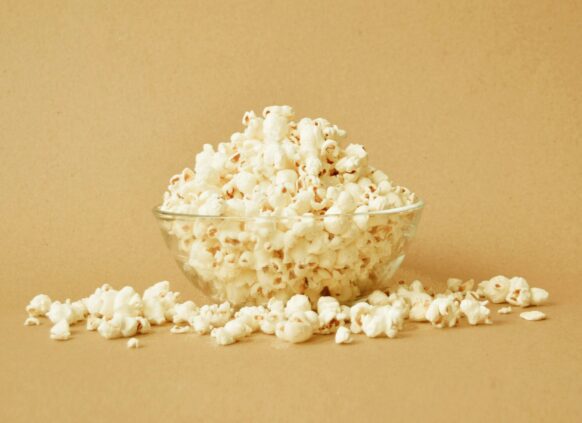
Foods to avoid for high blood pressure
While some foods can help lower your blood pressure, others may make it harder to manage. Here’s some of the foods to avoid for high blood pressure, and what to try instead.
1. High sodium foods
Too much salt raises the amount of sodium in your body, which increases water retention. That extra fluid places more pressure on your blood vessels – raising your blood pressure.
Foods to avoid:
- Salty snacks like crisps
- Ultra-processed foods
- Canned soups
- Frozen ready meals
Better choices:
- Look for reduced-salt versions of your favourites
- Rinse canned veg and beans
- Try batch-cooking meals at home
- Use herbs and spices instead of salt for flavour.
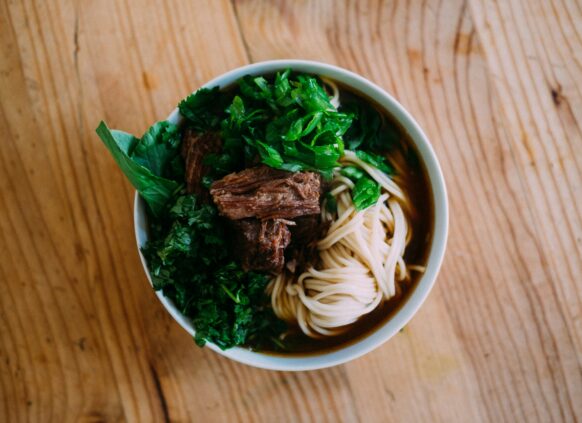
2. Sugary and processed foods
Foods high in sugar and heavily processed can contribute to weight gain – one of the biggest risk factors for high blood pressure.
Foods to avoid:
Sweets, cakes, biscuits, sugary drinks, packaged snacks, and ultra-processed ready meals
Better choices:
You don’t need to cut these out completely – small swaps can help.
- Try sugar-free drinks instead of full-sugar ones
- Plain yoghurt with a drizzle of honey instead of sweetened versions
- A couple of squares of dark chocolate in place of a larger treat
- Preparing simple meals at home a few times a week can help reduce hidden sugars
3. Red and processed meats
Try to limit your red and processed meat intake. These foods are high in sodium and saturated fat – both of which can raise your blood pressure and contribute to weight gain.
Foods to avoid:
- Bacon
- Ham
- Salami
- Burgers
- Sausages
Better choices:
- Swap to leaner proteins like chicken or fish
- Try chicken sausages, turkey mince or plant-based options
- Look for lower-sodium deli meat if needed
4. Alcohol
Drinking too much alcohol can raise blood pressure over time. UK guidelines recommend no more than 14 units per week, spread across several days. The WHO suggests keeping alcohol intake as low as possible and including alcohol-free days.
Drinking alcohol can lead to weight gain, a key contributor to high blood pressure – our calculator can help you work out how many calories you’re consuming from the alcohol you drink weekly.
Better choices:
- Reduce the amount you drink by switching to a small glass
- Choose 0% alcohol alternatives
- Try to space out any alcoholic drinks by alternating with water or sugar-free soft drinks
Discover the empty calories in your weekly drinks
Your Results
Totals:
0 Units
0 Calories
Equal to:
0 Minutes Walking
Select Drinks
Small bottle of beer
330ml, 4%
Large bottle of beer
500ml, 5%
Large glass of white wine
250ml, 13%
Single whisky
25ml, 40%
Alcopops
275ml, 5%
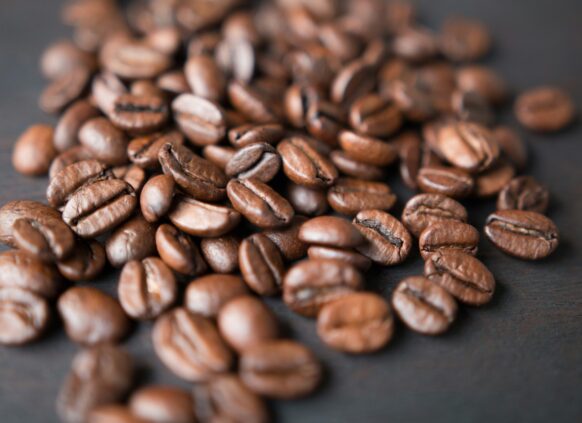
5. Caffeine
Caffeine can cause short-term spikes in blood pressure.
The relationship between caffeine and blood pressure is not yet fully understood, but some people appear more sensitive than others. This effect may be more noticeable in people who don’t drink caffeinated drinks often.
Try to keep your intake to no more than two or three cups of coffee or strong tea daily.
Better choices:
- Consider decaffeinated tea and coffee, even if that’s just switching out one of your caffeinated drinks each day
- Look into herbal and naturally caffeine-free alternatives, including mild-flavoured teas, but pay attention to sugar content.
What is the DASH diet?
The DASH diet – short for Dietary Approaches to Stop Hypertension – is a balanced, evidence-based eating plan designed to help lower blood pressure.
It focuses on foods rich in potassium, magnesium and calcium – nutrients that play a key role in regulating blood pressure. The diet encourages you to eat:
- Fruits and vegetables
- Fibre-rich whole grains
- Lean proteins
- Low-fat dairy
- Unsalted nuts and seeds
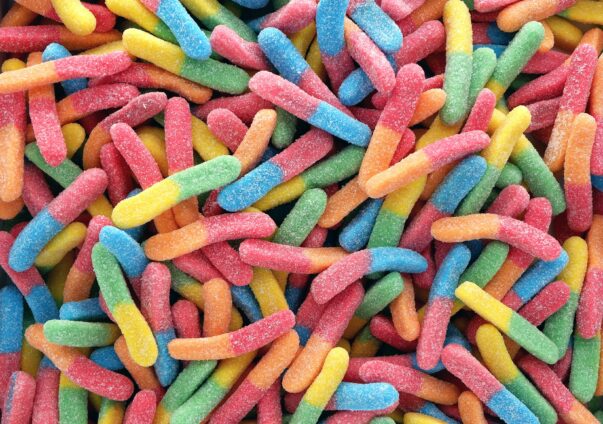
At the same time, it suggests limiting:
- Sodium
- Red meat
- Full-fat dairy
- Sugary drinks and sweets
Research shows the DASH diet can lower systolic blood pressure by over 6 mmHg and diastolic pressure by more than 3 mmHg – changes that can significantly reduce your risk of heart disease, stroke and other hypertension-related conditions.
One-day blood pressure-friendly meal plan
This simple one-day meal plan shows how small, sustainable food choices can support healthy blood pressure – even when life feels busy.
It’s designed to be realistic, flexible, and full of foods that are good for your heart.
| Breakfast | Overnight oats with berries – prep the night before and grab in the morning.
Use a low fat milk and consider adding Greek yoghurt. |
| Mid-Morning Snack | A handful of almonds and a banana |
| Lunch | Wholemeal sandwich with turkey, hummus and salad
Some berries or an apple |
| Afternoon Snack | Low-fat Greek yoghurt with honey |
| Dinner | One-tray roasted chicken thigh with potatoes, broccoli and carrots |
| Evening | Chamomile tea and a small piece of dark chocolate, or a few dark chocolate-coated Brazil nuts. |
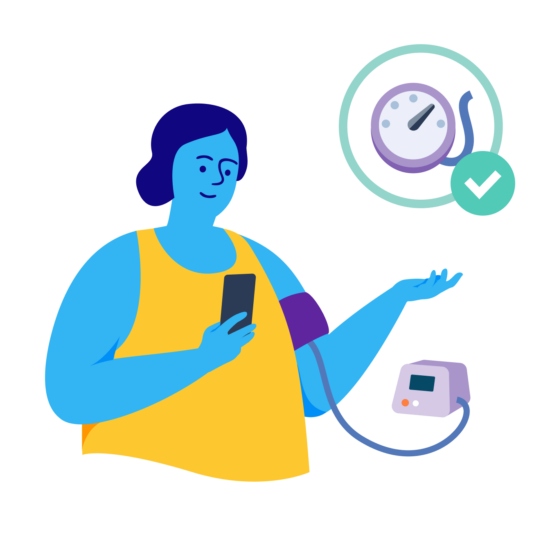
More ways to lower blood pressure
Alongside your diet, there are other simple changes that can help reduce your blood pressure:
- Move regularly – aim for a mix of aerobic activity (like walking or swimming) and strength-based exercise
- Manage stress – mindfulness, movement or even deep breathing can make a difference
- Prioritise sleep – 7 to 9 hours a night can support your heart and overall wellbeing
- Stop smoking – quitting can significantly lower your risk of heart disease and stroke
Even small steps can have a big impact over time – and you don’t need to get it perfect to see progress.
Oviva can help you make healthier food choices
Oviva is an NHS-funded programme designed to help you lose weight and improve your health – without calorie counting or fad diets.
If you have high blood pressure and a BMI over 35, you may be eligible for personalised support from dietitians, doctors and behavioural coaches. Together, you’ll build healthy habits around food, movement, sleep and more – all tailored to your life.
Medication support is available if appropriate, and everything is available remotely through the easy-to-use Oviva app.
